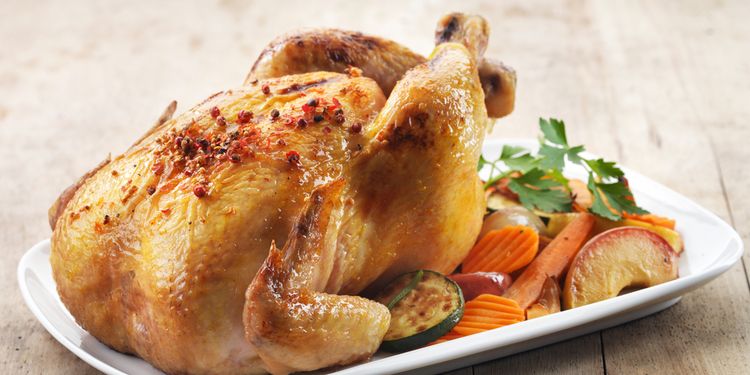Shop Like a Pro For High-Quality Meat

All meat is not created equal. Factory-farmed chickens pumped with hormones and antibiotics are not the same as the wild chickens our ancestors hunted back in the day.
Trying to find quality meat products in the modern world is like trying to avoid traffic in Los Angeles—it’s hard. Your ideal options would be to hunt your own meat (highly time-consuming…and somewhat dangerous) or hit up a few farmer’s markets every week, but even that takes time and often limits the cuts of meat that you have access to.
Thankfully, our friendly carnivore Abel James has some tips for us on how to get the best meat at the grocery store for the best price.

Buy a Whole Chicken and Use It All
It costs money to carve a chicken and package it into breasts, wings, legs, and thighs. Purchasing a whole chicken yourself will cost about half as much per pound as chicken breasts. You’ll also get a lot more out of it by:
- Roasting the chicken and having the breast and legs for one meal.
- Tearing away the remaining meat once it’s cooled for tacos, wraps, or stews.
- Throwing the bones into a slow cooker with some spices and water for 6 hours to make chicken broth (or real bone broth by letting it simmer for an additional 24-48 hours).
If Not a Whole Chicken, Stick to Dark Meat
If you can’t go big, go dark. The dark meat on a chicken tends to be less expensive, more flavorful, very tender, and quite nutrient-dense.
Chicken legs and thighs are easy to cook and come with bones so you can still cook that delectable bone broth we were talking about earlier.

Bargain Fishing
Fish tends to be thought of as a luxury culinary treat; however, it allows the economically conscious certain conveniences that other meats don’t.
First off, fish is packed with protein and omega-3s, and buying frozen fish (which tends to be cheaper and last longer) is just as good for you as fresh fish.
To get the best bang for your buck, focus on wild-caught white fish like Atlantic cod or grouper, which tend to be more affordable and nutritious. Other wild-caught fish may be more expensive but can be the perfect “treat yo’ self” meal every now and then.
Go Big
If you can go big, go big with beef. “Lesser” cuts of meat tend to contain a higher percentage of fat and are cheaper as a result, but when it comes to non-factory-farmed beef, that fat is highly nutritious and filling.
Be careful to avoid larger “lesser” cuts of commercial beef products, since toxins from those animals tend to accumulate in the fat. If you get a bone-in cut, you can also use it to make beef bone broth, which would otherwise be expensive at your local grocery store.

Include Organ Meats
Yes, they’re organs, which not a lot of people buy, but they’re more affordable as a result.
Organs are highly nutritious—beef liver, for example, is packed with vitamin A, vitamin B-12, iron, and protein. But much like the “go big” theory of larger beef cuts above, it’s important to buy organ meat from pasture-raised animals, since organs from commercially farmed animals are packed with toxins.
Organs can also be challenging to prepare for the less culinary inclined, so Abel James recommends grinding them up and adding them to ground beef, bison, or pork.

Keep an Eye Out for Seasonal Meats and Sales
Meat at grocery stores has a short “sell by” date, meaning perfectly fresh meat is often sold at a discount just so the managers don’t have to throw it out.
This meat is not bad or gross, and you can stock up every time there’s a sale at your local grocery store by throwing it in the freezer.
There are also seasonal considerations; whole turkeys after Thanksgiving or seafood after fishing season are just as fresh during “peak” season but cost less because of the economical forces at play.
Key Takeaways
It’s a common misconception that high-quality food is expensive. In reality, it can actually be more affordable than loading up your cart with Hot Pockets and Easy Mac. It just requires a little forethought and preparation.
Remember to buy larger “lesser” cuts of meat (or even the whole animal), and look out for seasonal sales and particular meats that are less sought-after but just as nutritious and tasty.
While buying a box of prepackaged, highly-processed chemicals labeled as “snacks” may seem more convenient, you’re ultimately paying more out of your wallet for your health insurance policy.
